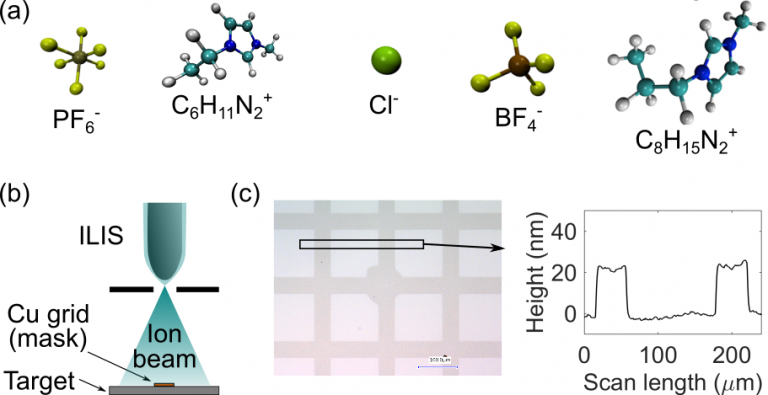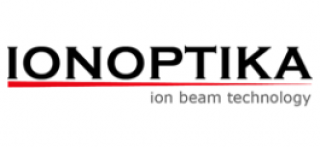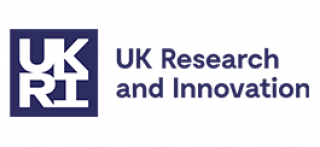FABILIS Research
Ionic liquids are room temperature molten salts, or mixtures of cations or anions that are liquid at room temperature with no intervening solvent. You can think of it as a plasma in a bottle. The cations are usually large organic molecules, while the anions may be complex organic or simple inorganic ions. Ionic liquids have attracted much interest in energy storage and electrochemical synthesis, thanks to their stability, non-volatility, appreciable electrical conductivity, large electrochemical windows, and their suitability as solvents.
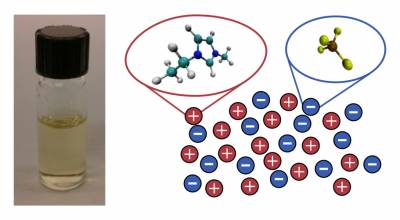
Example of an ionic liquid, 1-ethyl-3-methylimidazolium tetrafluoroborate.
In ILIS, a micro-tip emitter is covered with ionic liquid and biased to a high voltage with respect to a downstream metallic extractor. The electric field causes the liquid to deform into a sharp meniscus. At the apex of the meniscus, the electric field is high enough to trigger evaporation of ions from the liquid. The resulting beam can be used to treat materials.
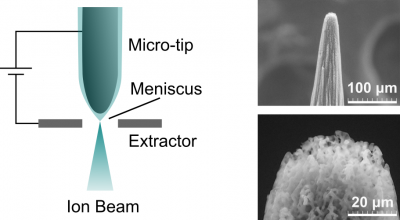
Basic ILIS configuration, and scanning electron micrographs of an ILIS emitter microtip made of porous carbon xerogel.
Our Work
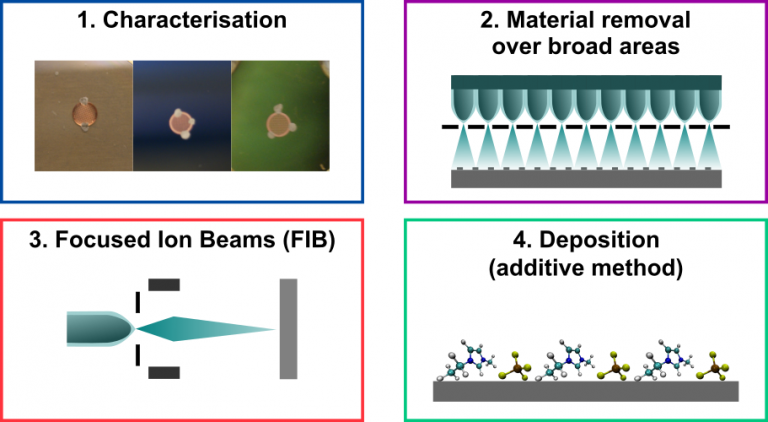
1. Characterisation: There are many different ion species that can be produced by ILIS and many materials we can process with them. We investigate which ions are most effective for treatment of semiconductor materials and biological specimens.
2. Material removal over broad areas: A single ion source can only provide a limited current and is slow in material processing. We will investigate the use of multiplex arrays of ILIS for high-throughput processing.
3. Focused Ion Beams (FIB): focusing of a beam from an ILIS to less than 100 nm is yet to be demonstrated. We seek to design and construct a bespoke focusing column for the beams produced by ILIS, and to implement this in an existing FIB system. An ILIS-FIB could be used for nanomachining, secondary ion mass spectrometry (SIMS), imaging, etc.
4. Deposition: if the beam energy is low enough, it may be possible to deposit thin films of ionic liquids; these thin films could in turn be used for fundamental studies on ionic liquid interfaces.
Most relevant publications
C. Perez-Martinez and P. Lozano, "Ion field-evaporation from ionic liquids infusing carbon xerogel microtips," Applied Physics Letters, Vol. 107, 043501 (2015)
C. Perez-Martinez et al., "Development of Ion Sources from Ionic Liquids for Microfabrication," Journal of Vacuum Science and Technology B, Vol. 28, No. 3, L25-27 (2010)
 Close
Close


